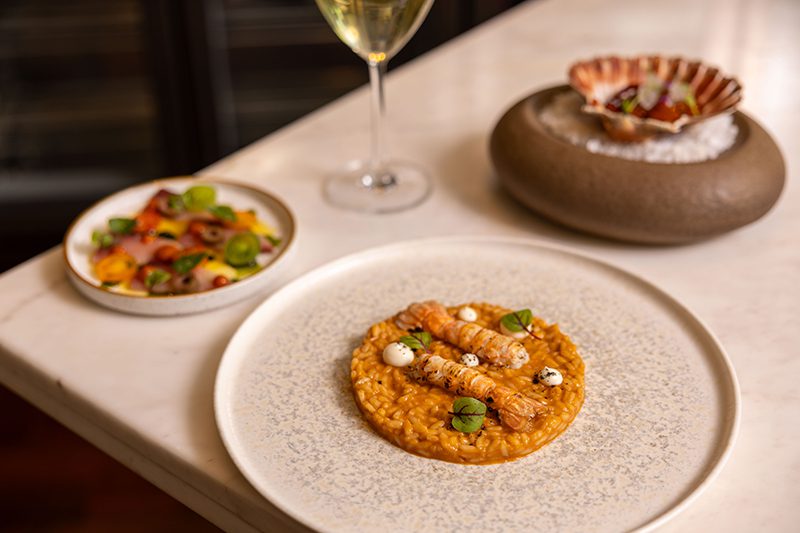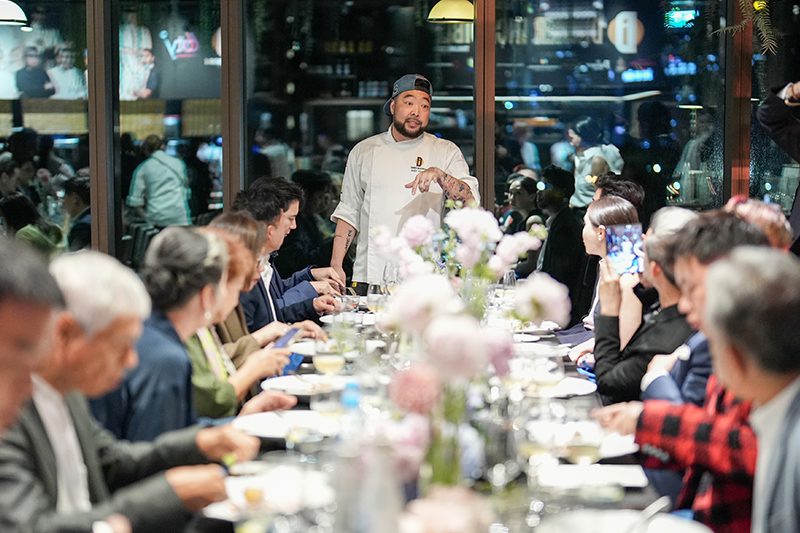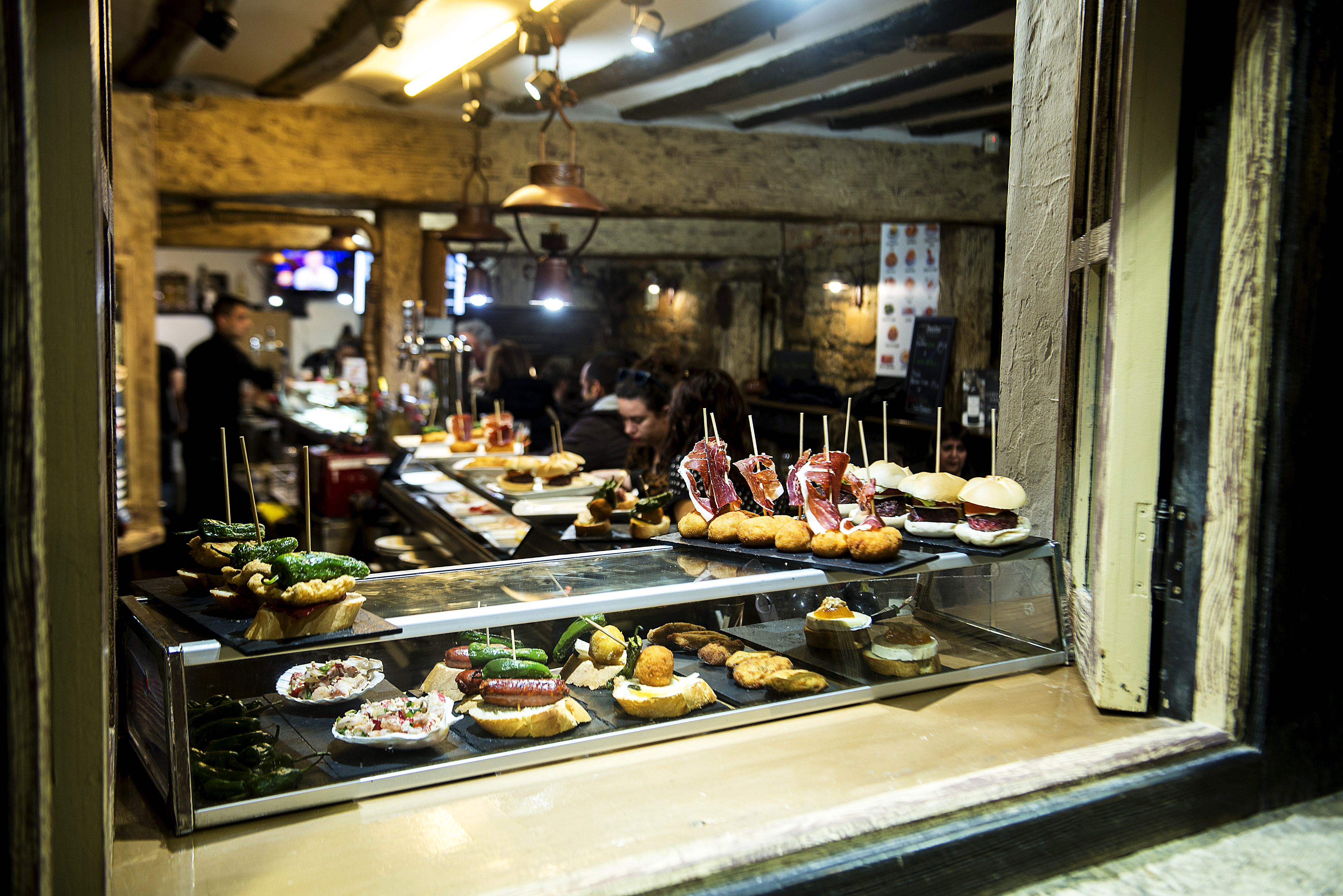
World On A Plate: 5 Popular Cuisines In the World
Eating is a significant part of any travel experience, and whether it’s enjoying a lamb and pear tajine in Morocco, some spicy jerk chicken in Jamaica or a selection of tapas in Spain, there’s nothing better than savouring a dish in its country of origin, plus it’s a great way to meet the locals.
MOROCCAN
It is said that in order for a nation to develop a great cuisine, it must have four prerequisites. A rich land from which to draw upon an abundant range of ingredients, a variety of foreign cultural influences, a great civilisation and lastly, a refined palace with royal kitchens to inspire the nation’s cooks. Morocco has it all, and is home to some of the most delicious food imaginable.
From robust roasts to rich aromatic stews, spiced or sweetened salads to savoury pastries, fragrant mounds of couscous to bastilla, an exquisite blend of shredded pigeon, a spiced onion sauce with saffron and herbs encased in a flaky, filo-like pastry topped with cinnamon and sugar – an intricate dish that epitomises everything that is grand and extravagant in Moroccan cooking.
One of the most interesting ways to absorb the delights of Moroccan cuisine is to wander through the souks (markets) of the towns and cities, sampling the food on offer. It’s early morning in old Fés and sunlight streams in slanted rays through the woven bamboo shades covering the narrow alleyways, catching the steam rising from the many cookers.
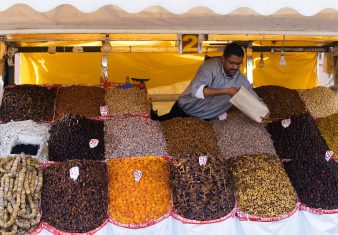 Close to the city gate of Bab Bou Jaloud, one stallholder is busy cooking and serving a typical Moroccan breakfast, miklee – flaky pancakes with butter and honey. In a nearby fruit and vegetable souk, produce of every kind lines the street – juicy oranges from the sun-drenched groves of Agadir, vine-ripened tomatoes, plump mounds of grapes and preserved fruits and nuts. Entire shops are jam-packed with olives of all types; others display hanging baskets bulging with fresh mint, used to make mint tea that is traditionally served before and after a meal.
Close to the city gate of Bab Bou Jaloud, one stallholder is busy cooking and serving a typical Moroccan breakfast, miklee – flaky pancakes with butter and honey. In a nearby fruit and vegetable souk, produce of every kind lines the street – juicy oranges from the sun-drenched groves of Agadir, vine-ripened tomatoes, plump mounds of grapes and preserved fruits and nuts. Entire shops are jam-packed with olives of all types; others display hanging baskets bulging with fresh mint, used to make mint tea that is traditionally served before and after a meal.
At a spice souk, bright red paprika, rich yellow turmeric, dusty sticks of cinnamon, seeds of cumin, aniseed and caraway are heaped in tubs waiting to be measured into twisted envelopes of paper. These are some of the spices that form the soul of Moroccan cooking, transforming simple dishes to exotic heights.
One of Morocco’s most famous dishes is the tajine or tagine. The name refers to the conical-lidded pot in which it is prepared, as well as the intricately spiced stew of meat and vegetables, sometimes with dried fruits and nuts, cooked very slowly over a charcoal fire. Typical tajine combinations include: lamb with pears and chicken with green olives and preserved lemons – simple yet delicious dishes that are often accompanied by thick wedges of crusty Moroccan flat bread, perfect for soaking up the sauce.
 JAMAICAN
JAMAICAN
From fiery seasoned meat and inventive seafood dishes to oak-aged rums and hearty stouts, Jamaican cuisine is an eclectic mix of African, European and Indian influences – and is surprisingly healthy and varied. Although many restaurants offer excellent dining, you’re just as likely to have a great culinary experience by eating local style – and here that means one thing: Jamaica’s signature dish of jerk chicken or pork.
Jerk chicken is believed to have been conceived when the Maroons introduced African meat-cooking techniques to Jamaica, which were combined with native Jamaican ingredients and seasonings used by the Amerindians. At most places, the recipe for jerk sauce is a closely guarded secret, but it usually contains peppers, onions, pimento, ginger and chilli.
Although there are thousands of ‘ jerk centres’ – as they are known on Jamaica – one of the best places to go is Scotchies, an unassuming thatched-roofed joint on the outskirts of Montego Bay. It’s late Friday afternoon and a reggae soundtrack combines with delicious aromas that waft on the balmy tropical breeze. Rows of chickens are splayed flat and whole backs of pig sizzle in jerk marinade over a low fire of pimento wood, which introduces a strong, distinctive smoky flavour to the meat. A cool mix of locals and visitors rub shoulders at rustic tables opening tin foil parcels of tasty jerk chicken, pork or fish washed down with a Red Stripe beer, the island’s tipple of choice.
In addition to being jerked, chicken is typically fried or curried, while fish can be grilled, steamed with okra and pimento pods, or brown-stewed in a tasty sauce. Rice and peas (rice cooked with coconut, spices and red kidney beans) is the accompaniment to most meals, though you’ll also come across festival (deep-fried cornmeal dumplings), breadfruit, sweet potatoes and yam.
Other Jamaican specialities include mouth-watering curried goat, peanut porridge and ackee and salt fish – a classic and addictive breakfast dish. Another popular and widely available foodstuff is the vegetable, chicken or beef patty, with around one million of these Cornish pasty-like snacks being eaten by Jamaicans every day.
When it comes to non-alcoholic beverages, there’s refreshing coconut juice, throat-tingling ginger beers and unusual fresh natural juices such as tamarind, June plum, guava, sorrel and sour sop. Finally, the rich, black volcanic soil of Jamaica’s majestic Blue Mountains produces Jamaican Blue Mountain – a wonderfully balanced brew, full-bodied with a smooth finish.
SPANISH
Spain’s distinctive cuisine brings together unique regional dishes, special ingredients and long-standing influences from Moorish and Arab settlers. Among the multitude of recipes from all over Spain, a few can be considered common to all or almost all of the country. Garlic is a Spanish favourite and used in almost everything. Olives are also an integral part of Spanish cuisine, whether used in olive oil (of which Spain produces more than any other country) or marinated and eaten as an aperitif or in cooking.
For centuries the pig has been the great benefactor of Spanish gastronomy and supplied cured meat products like sausages and salamis, particularly the spicy chorizo, Spain’s best-loved sausage. Suckling pig and lamb also feature on menus and smaller game such as rabbit and partridge provide the ingredients for traditional stews and soups. Ham or jamón is also highly prized and you will often come across different types, but typically it will be jamón serrano or ham from the sierra or mountains.
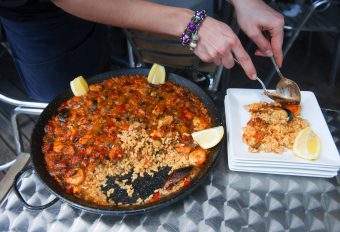 Seafood such as prawns, shrimps, anchovies and sardines are all widely consumed and monkfish is one of the nation’s favourite fish. All these can make an appearance in the ubiquitous fish soup or paella, which varies from region to region. Gazpacho is another well-known Spanish soup, made with tomato, olive oil, garlic, cucumbers and croutons, served chilled. There’s also a wonderful range of cheeses available from the aged manchego variety from La Mancha, to the soft creamy cheeses such as tetilla from Galicia and everything in between.
Seafood such as prawns, shrimps, anchovies and sardines are all widely consumed and monkfish is one of the nation’s favourite fish. All these can make an appearance in the ubiquitous fish soup or paella, which varies from region to region. Gazpacho is another well-known Spanish soup, made with tomato, olive oil, garlic, cucumbers and croutons, served chilled. There’s also a wonderful range of cheeses available from the aged manchego variety from La Mancha, to the soft creamy cheeses such as tetilla from Galicia and everything in between.
Going on a tapas crawl is an excellent and authentic way to get into Spain’s eating and drinking groove and a great chance to sample a variety of its foods. Tapas are basically a generic name for small portions of anything edible and can vary from simple to gourmet. It could be a bowl of olives or deep-fried squid, tortilla española (potato and onion omelette), pimientos de padrón (green peppers grilled with olive oil and salt), angulas (baby eels on toast), anchovies on bread, or more elaborate miniature creations of haute cuisine.
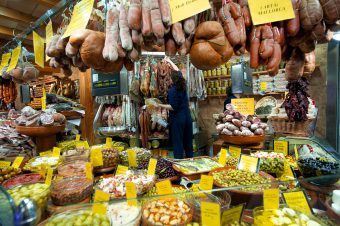 A great place to sample tapas is Logroño (capital of the Rioja region) which is rapidly gaining a culinary reputation to rival anywhere in Spain, only enhanced by its ‘Gastronomic Capital of Spain’ award in 2012. Tapas are known in these parts as pinchos or pintxos, because many of them have a pincho (Spanish for spike), typically a toothpick or skewer holding the food on a slice of bread.
A great place to sample tapas is Logroño (capital of the Rioja region) which is rapidly gaining a culinary reputation to rival anywhere in Spain, only enhanced by its ‘Gastronomic Capital of Spain’ award in 2012. Tapas are known in these parts as pinchos or pintxos, because many of them have a pincho (Spanish for spike), typically a toothpick or skewer holding the food on a slice of bread.
The place to go to sample pinchos in Logroño is buzzing Calle del Laurel, where gastro-bars and old-world taverns rub shoulders with each other. There are dozens of pinchos bars and hundreds of pinchos to choose from, with some bars offering several varieties, while others are famous for just one. They are usually cheap, and when paired with a glass of local red wine, usually cost around 2.50 euros.
A few places to get you started include La Taberna del Laurel (Calle del Laurel, 7) whose house speciality at is patatas bravas (potatoes in spicy tomato sauce), while La Tasca del Pato (Calle del Laurel, 24) offers white asparagus grilled with a wrap of Rioja cheese. Bar Lorenzo (Calle del Laurel, 4) majors on simply grilled chistorra (chorizo with sweet paprika and garlic) and lamb kebabs, while Bar Soriano (Calle del Laurel, 2) is famed for its delicious mushroom pinchos which have been served for the past forty years – three mushrooms grilled and smothered with a rich and buttery sauce of garlic and olive oil, skewered on a slice of baguette and crowned with a shrimp.
BRITISH
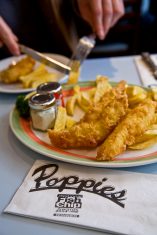 Ask anyone to name a typical British food and even a Londoner will likely suggest fish and chips. Battered fish and thick-cut potato chips – both deep fried, salted and sprinkled with vinegar are as much a part of the nation’s fabric as discussing the weather, a cup of tea or a pint down the local pub. A marriage made in the 19th century to provide cheap and nutritious food for the working masses, they have fed countless memories for generations. The true home of fish and chips is by the sea and there is still a special magic about eating them at a classic British seaside resort. The Magpie Café overlooking the harbour in Whitby on the Yorkshire coast revels in its reputation as the place to go to enjoy some of the best in the north. In London’s Covent Garden, near the theatre district, is the Rock & Sole Plaice, the capital’s oldest surviving fish and chip shop, dating from 1871. Serving deliciously fat chips and daily specials it’s the perfect venue for that after-show pit stop.
Ask anyone to name a typical British food and even a Londoner will likely suggest fish and chips. Battered fish and thick-cut potato chips – both deep fried, salted and sprinkled with vinegar are as much a part of the nation’s fabric as discussing the weather, a cup of tea or a pint down the local pub. A marriage made in the 19th century to provide cheap and nutritious food for the working masses, they have fed countless memories for generations. The true home of fish and chips is by the sea and there is still a special magic about eating them at a classic British seaside resort. The Magpie Café overlooking the harbour in Whitby on the Yorkshire coast revels in its reputation as the place to go to enjoy some of the best in the north. In London’s Covent Garden, near the theatre district, is the Rock & Sole Plaice, the capital’s oldest surviving fish and chip shop, dating from 1871. Serving deliciously fat chips and daily specials it’s the perfect venue for that after-show pit stop.
Whether home-cooked or enjoyed at a local pub or restaurant across the country, another equally celebrated British dish is the traditional Sunday roast or ‘Sunday lunch’ of roast beef (with Yorkshire pudding and horseradish), chicken (with redcurrant jelly), lamb (with mint sauce) or pork (with applesauce), served with roasted potatoes and vegetables. A top-notch place to sample it is the 14th-century Star Inn, situated in the picturesque village of Harome, on the edge of the North Yorkshire Moors. Much loved by foodies and locals alike, this thatched Michelin-starred inn does a cracking Sunday lunch that’s well worth travelling for: Roast sirloin of Marwood’s village reared beef with Yorkshire pudding, roasted red onion, ‘two chefs’ ale gravy and fresh horseradish sauce…
Back down south in London, the capital’s oldest restaurant Rules has been serving typical British fare such as game, pies, oysters and puddings ever since Thomas Rule opened its doors in 1798. This posh and very British institution owns the Lartington Estate in the High Pennines and is able to source quality game and meat produce that helps shape its menus throughout the year. Some typical dishes include: Steamed Steak & Kidney Suet Pudding, Leg & Saddle of Rabbit and Apple & Rhubarb Crumble. Another eatery keeping the traditions of the British kitchen alive is the 17th-century, heritage-listed English Restaurant near Old Spitalfields Market, which serves scrumptious Bread & Butter Pudding, and nearby is St. John Bread & Wine, a great place to sample another classic British comfort food – a delicious bacon sandwich, sometimes called a ‘bacon butty.’
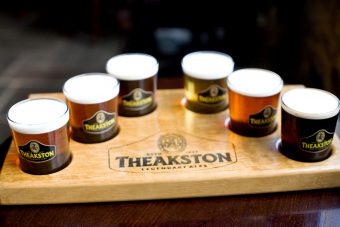
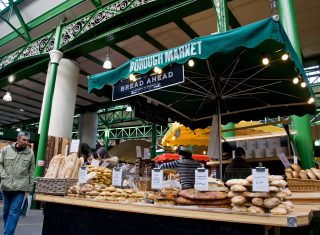 From the middle of the 19th century until just after the Second World War, spiced-eel pie (the Thames was once writhing with them) served with mashed potatoes was the staple lunch for many Londoners. These days, authentic pie and mash shops are a dying breed, but one of the best intact examples is L. Manze in Walthamstow, north-east London. The glorious interior features exquisitely-tiled and mirrored walls, six-seater wooden booths and a large menu board listing its dishes and prices. It’s well worth the effort to take the Tube to Walthamstow Central and hike along the High Street to this Grade II-listed pie and mash masterpiece. Slide into one of the wooden booths to enjoy a crisp homemade pie with creamy mash and parsley liquor – and if you are feeling adventurous, maybe add a side of jellied eels…
From the middle of the 19th century until just after the Second World War, spiced-eel pie (the Thames was once writhing with them) served with mashed potatoes was the staple lunch for many Londoners. These days, authentic pie and mash shops are a dying breed, but one of the best intact examples is L. Manze in Walthamstow, north-east London. The glorious interior features exquisitely-tiled and mirrored walls, six-seater wooden booths and a large menu board listing its dishes and prices. It’s well worth the effort to take the Tube to Walthamstow Central and hike along the High Street to this Grade II-listed pie and mash masterpiece. Slide into one of the wooden booths to enjoy a crisp homemade pie with creamy mash and parsley liquor – and if you are feeling adventurous, maybe add a side of jellied eels…
Right by the South Bank near Southwark Cathedral is the historic Borough Market, one of the largest, oldest and best food markets in London. A market has operated here, in some form or another since medieval times, and during the past decade ‘London’s Larder’ has enjoyed a significant renaissance. Producers come from all over the country to sell their locally-sourced produce at this fantastic market including meats, cheeses, breads, coffees, cakes and pastries. It’s a culinary feast for the senses and the place is abuzz with traders selling fresh seafood, slabs of local cheese, home-grown honey, crusty artisan spelt bread, exotic mushrooms and organic fruits and vegetables in every colour of the rainbow. There’s plenty of free food and drink tastings on offer, in addition to takeaway stalls selling sizzling sausages, gourmet wraps and wild venison burgers.
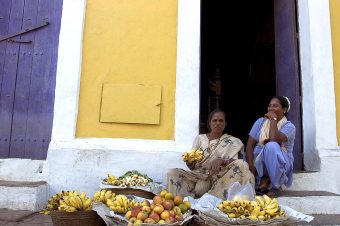
INDIAN
Early morning and the sun begins to slowly rise above a skyline of sloping red-tiled roofs, white-washed churches and a lush hillside of billowing palms in Panaji, the capital of the Indian state of Goa. A woman in an orange sari balancing a wicker basket of vegetables on her head walks past a brilliant blue wall, while in the distance there’s the sound of bicycle horns as bread boys deliver soft-wheat flour rolls to villagers on the outskirts.
Removed from Goa’s touristy beach resorts, Panaji offers the opportunity of a more authentic culinary experience where you can sample not only local specialities but also feasibly attempt a gastronomic tour of the whole of India, without straying far from your accommodation.
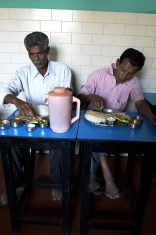 From simple hole-in-the-wall eateries to plush air-conditioned restaurants, Panaji is packed with a good range of places to eat, offering everything from traditional Goan dishes to specialities from other Indian states. Popular local dishes to look out for include sorpotel (a rich spicy meat stew), xacuti (chicken cooked in coconut milk and a variety of spices) and recheiado (a delicious preparation in which a whole fish is stuffed with a spicy red sauce).
From simple hole-in-the-wall eateries to plush air-conditioned restaurants, Panaji is packed with a good range of places to eat, offering everything from traditional Goan dishes to specialities from other Indian states. Popular local dishes to look out for include sorpotel (a rich spicy meat stew), xacuti (chicken cooked in coconut milk and a variety of spices) and recheiado (a delicious preparation in which a whole fish is stuffed with a spicy red sauce).
Vegetarians are well catered for at the numerous South Indian-style cafeterias, known as “udipi’’ restaurants that have sprung up in recent years. It won’t take you long to discover that you don’t need to spend big to enjoy delicious and authentic food in India. It’s also a truism that some of the best cooking can be found in the least pretentious restaurants, often family-run.
The thali is the ubiquitous Indian lunch, which just happens to be one of the whole sub-continent’s best food deals. For a handful of rupee, you get a stainless steel platter with small, fitted bowls usually containing a piece of fried fish, dry and wet vegetable dishes, roti, papadums, rice, pickle, and dahl (lentil curry). Thalis provide a great opportunity to taste many Indian dishes at the one sitting and the chance to explore regional variations.
Like much of India, Goa’s staple dish eaten twice a day by most of the population is fish curry and rice. In Panaji, to eat it where the locals do, head to the Cafe Ritz just round the corner from the Municipal Gardens. This no-frills gem really packs in the lunch crowd where the dining could not offer a starker contrast to its opulent London namesake. Instead of a selection of delicate sandwiches served with fine tea poured from ornate silverware, there’s the click-clack of steel thalis being slapped down on tables along with glasses of steaming sweet milky chai…

